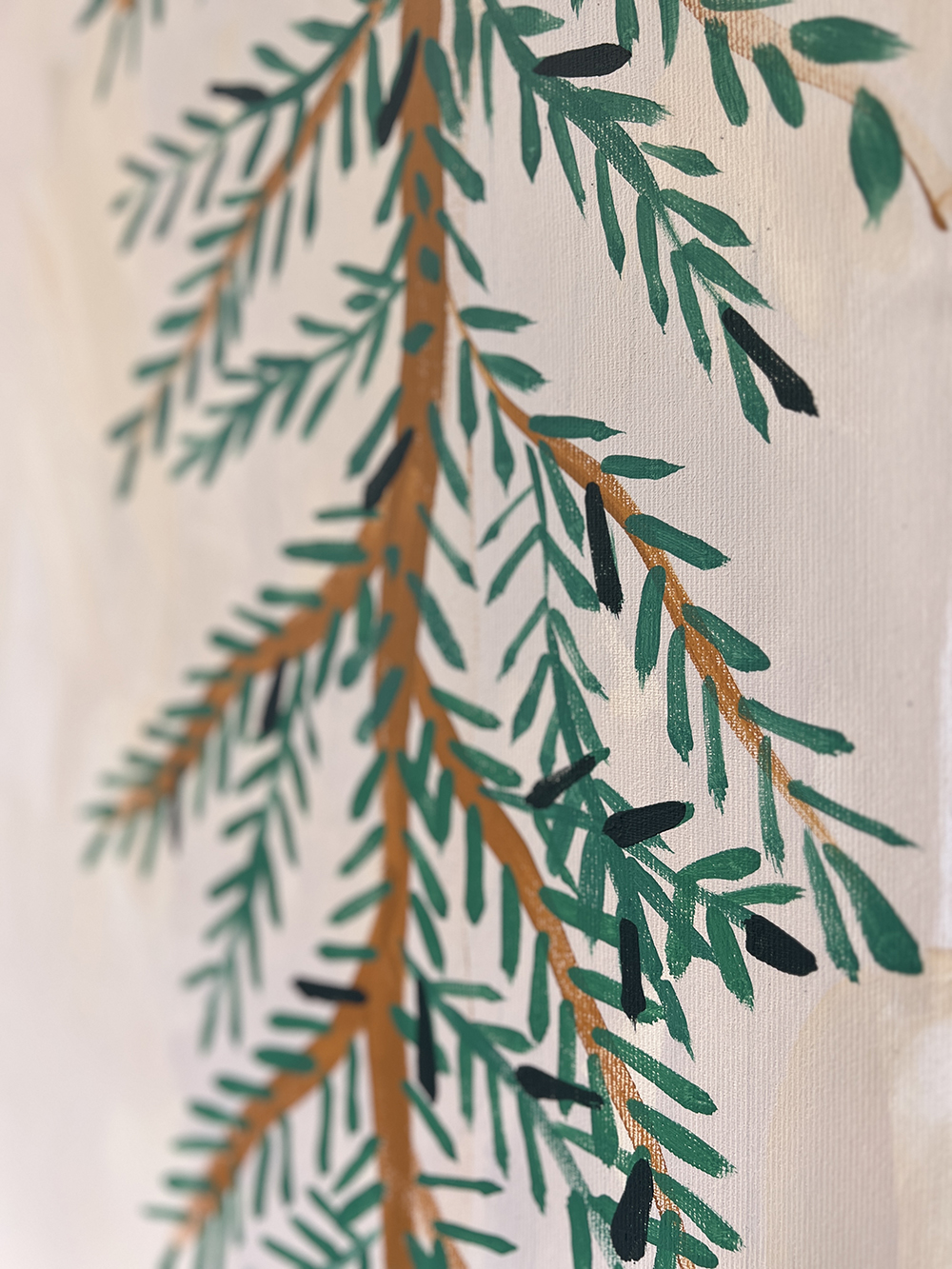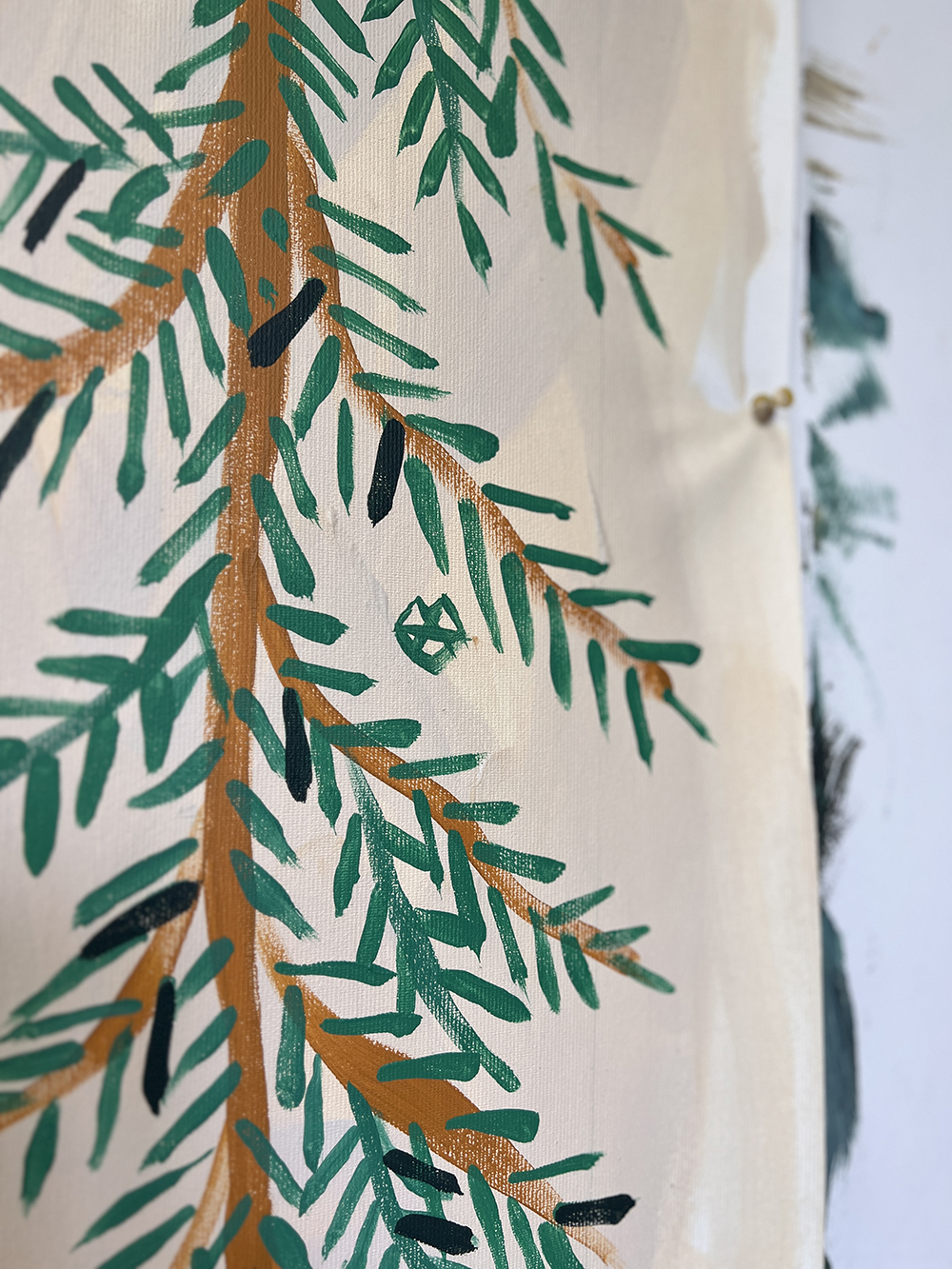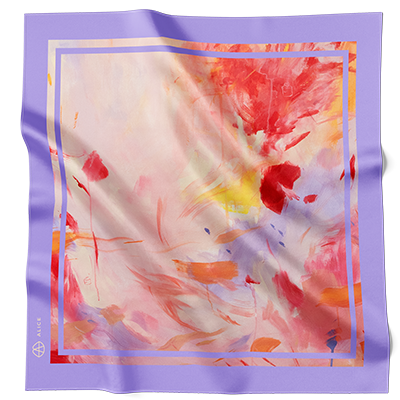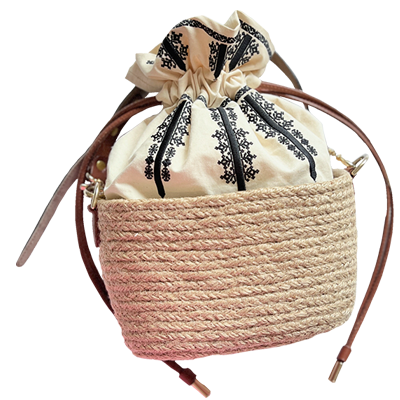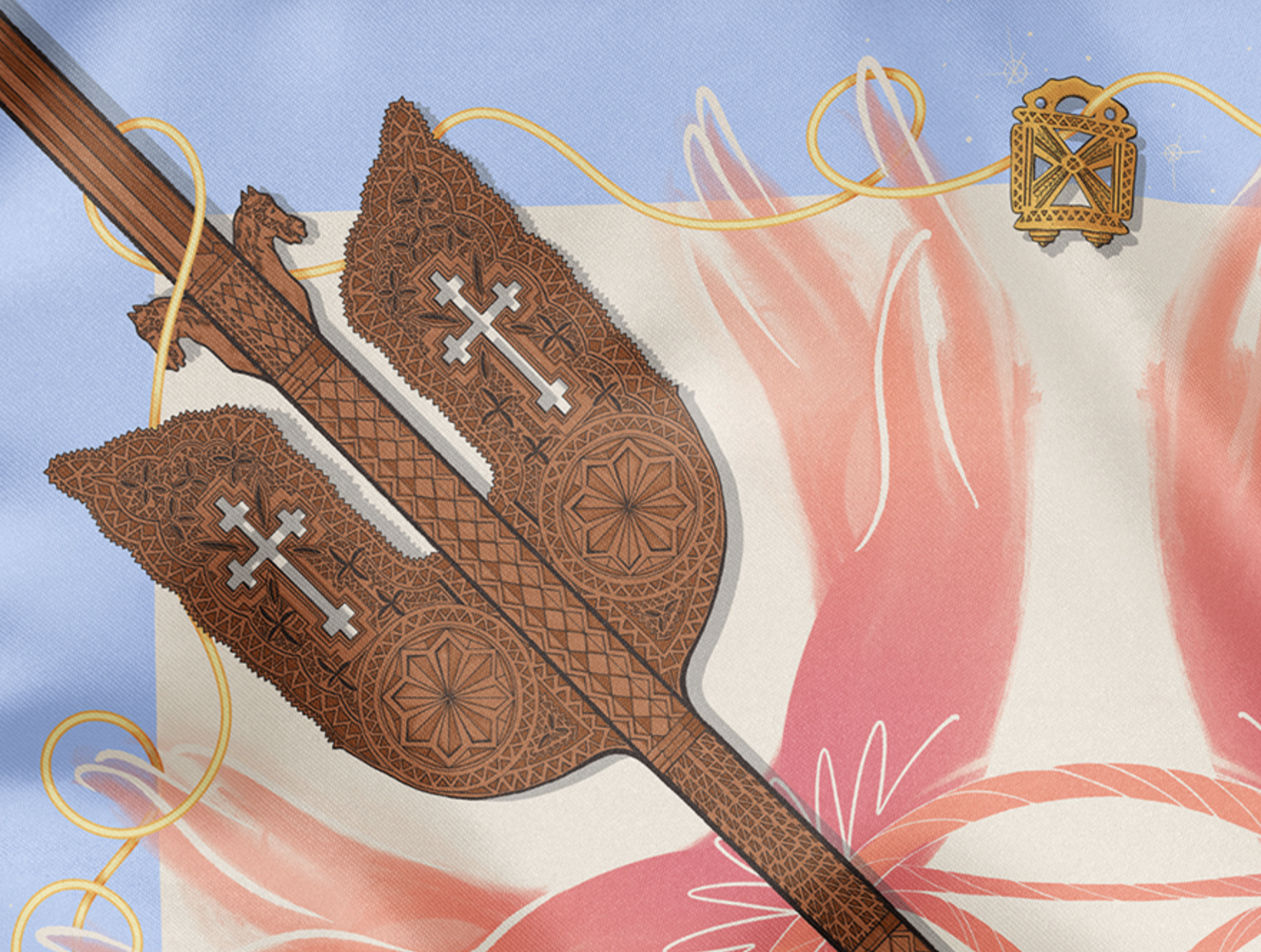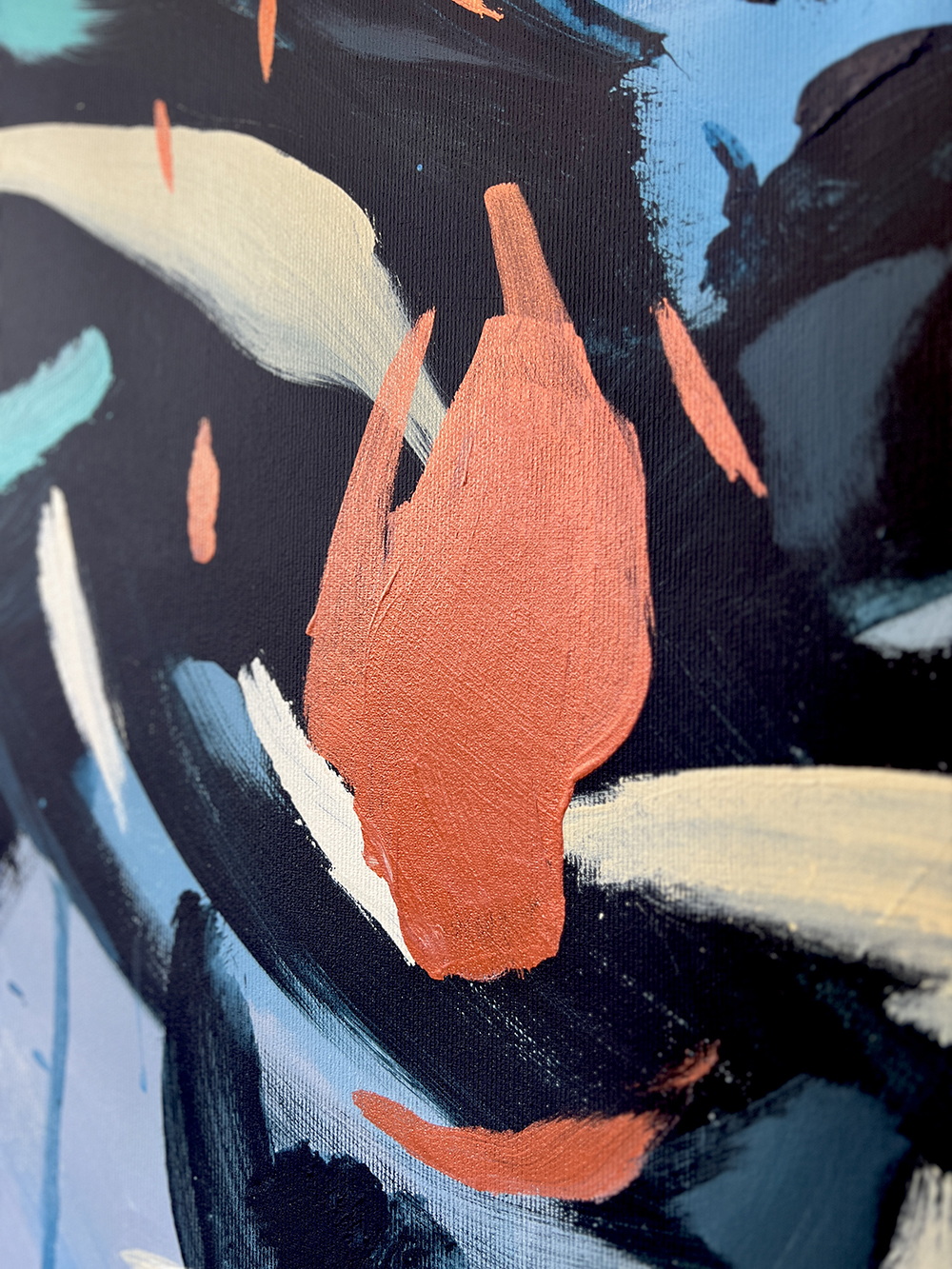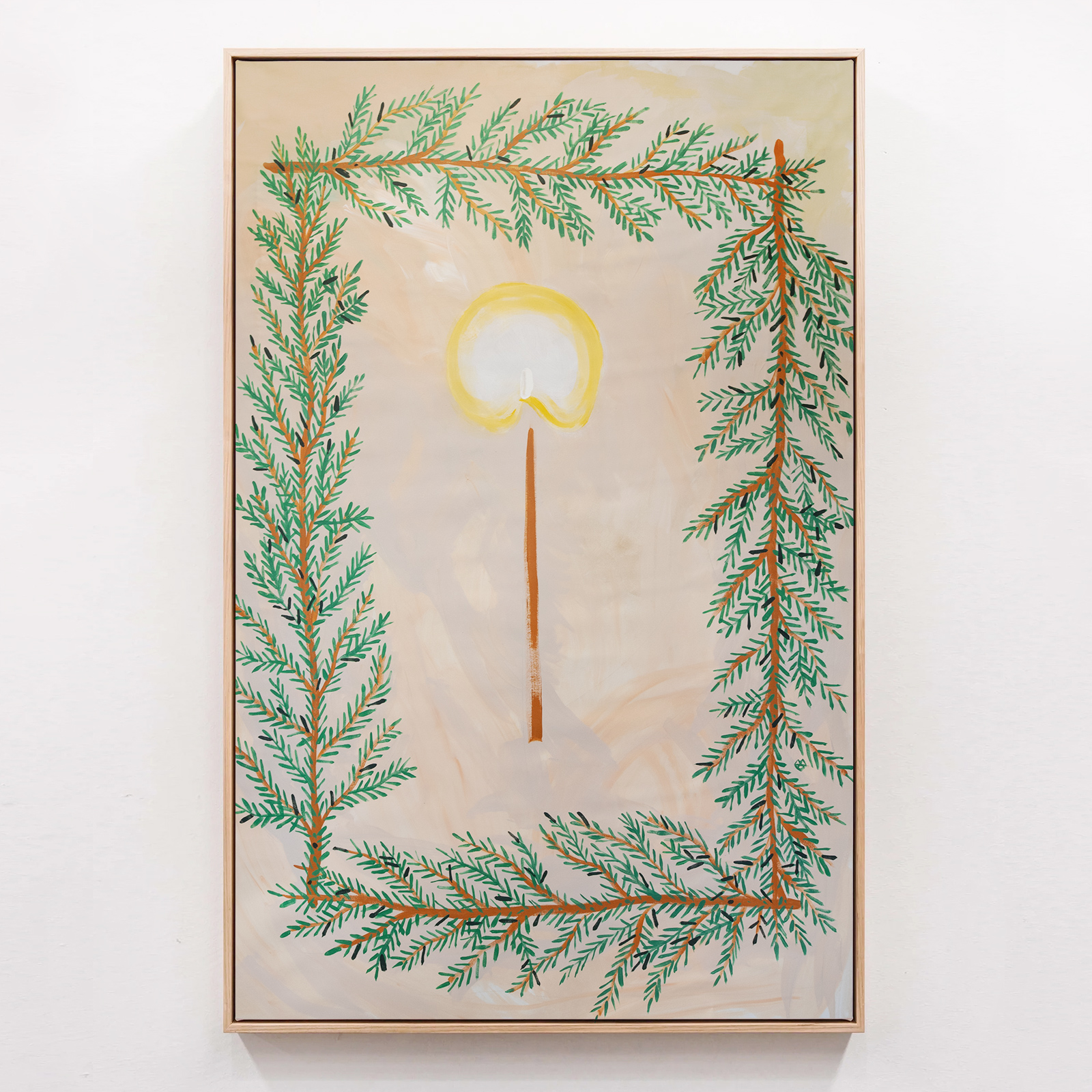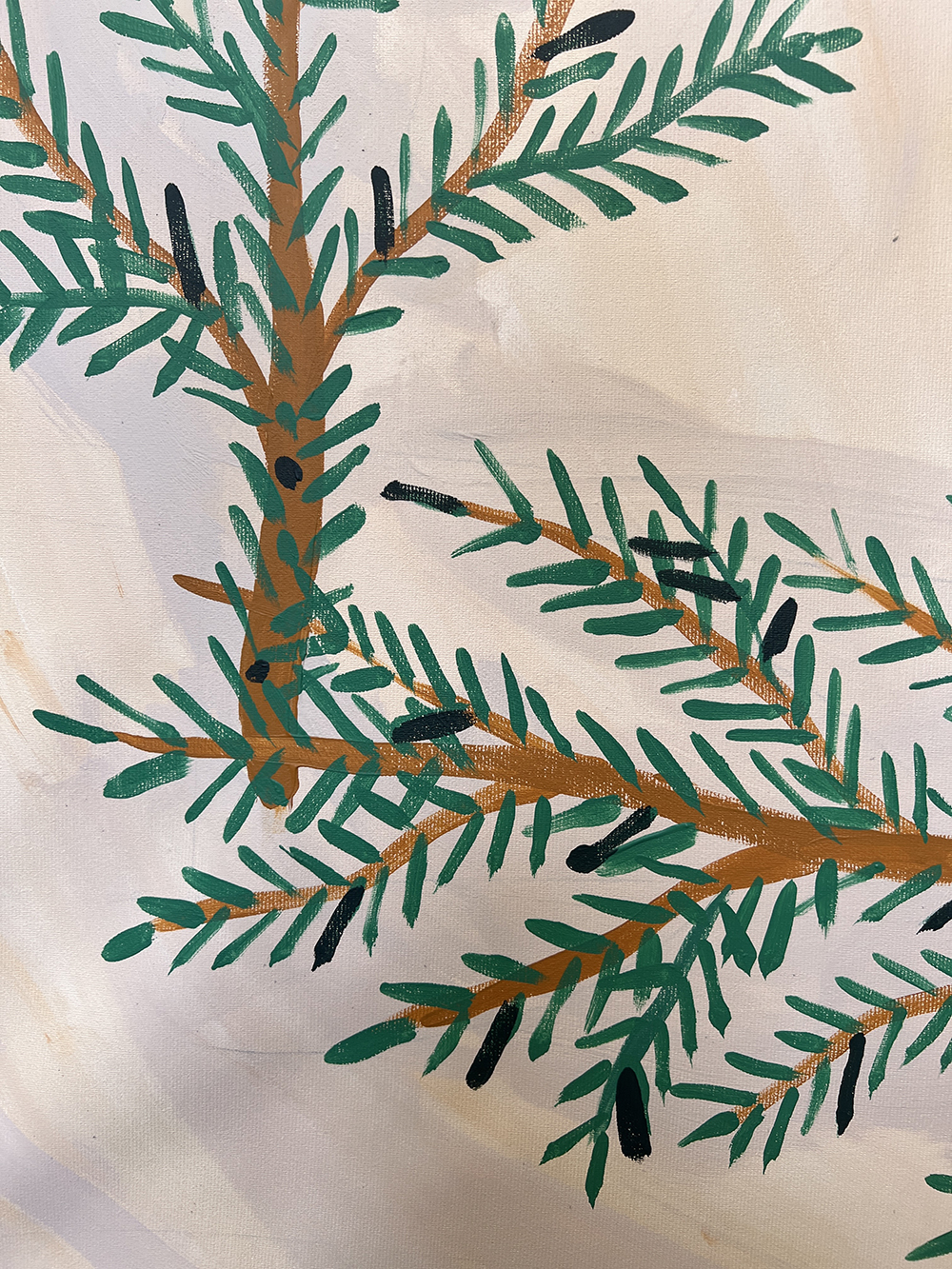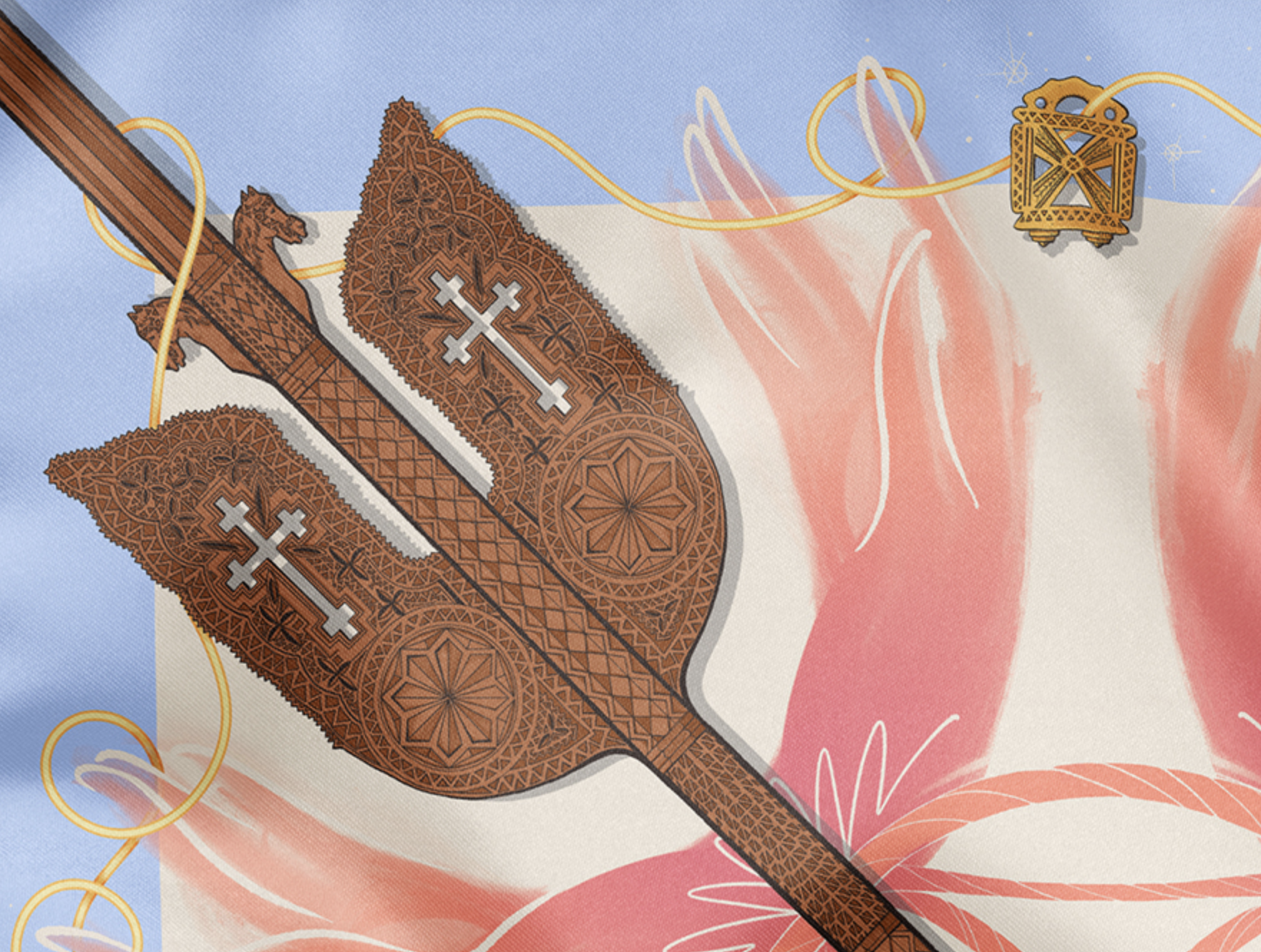In the 19th century, when in Transylvania the policy of the Habsburg rule was unfavorable to Romanian Orthodoxy, some pious residents of Galeș (a village part of the Mărginimea Sibiului) went to the “hagialâc”, that is, to Jerusalem, for the Easter holiday. Impressed by the way the Tomb of the Lord was adorned there, probably like a small cell made of palm leaves, with candles and icons inside, they proposed to follow the example of the Holy City, and the inhabitants of the village, as well as the Orthodox priest, agreed.
The arrangement called “The House of the Lord” was mounted in the church immediately after the morning service on Good Friday, until Ispas (The Ascension of the Lord). It consisted of a strong wooden skeleton, dressed with fir branches and placed in the middle of the church. It had the shape of a rectangular cell with an opening towards the church door, and in the four corners there were four small firs.

